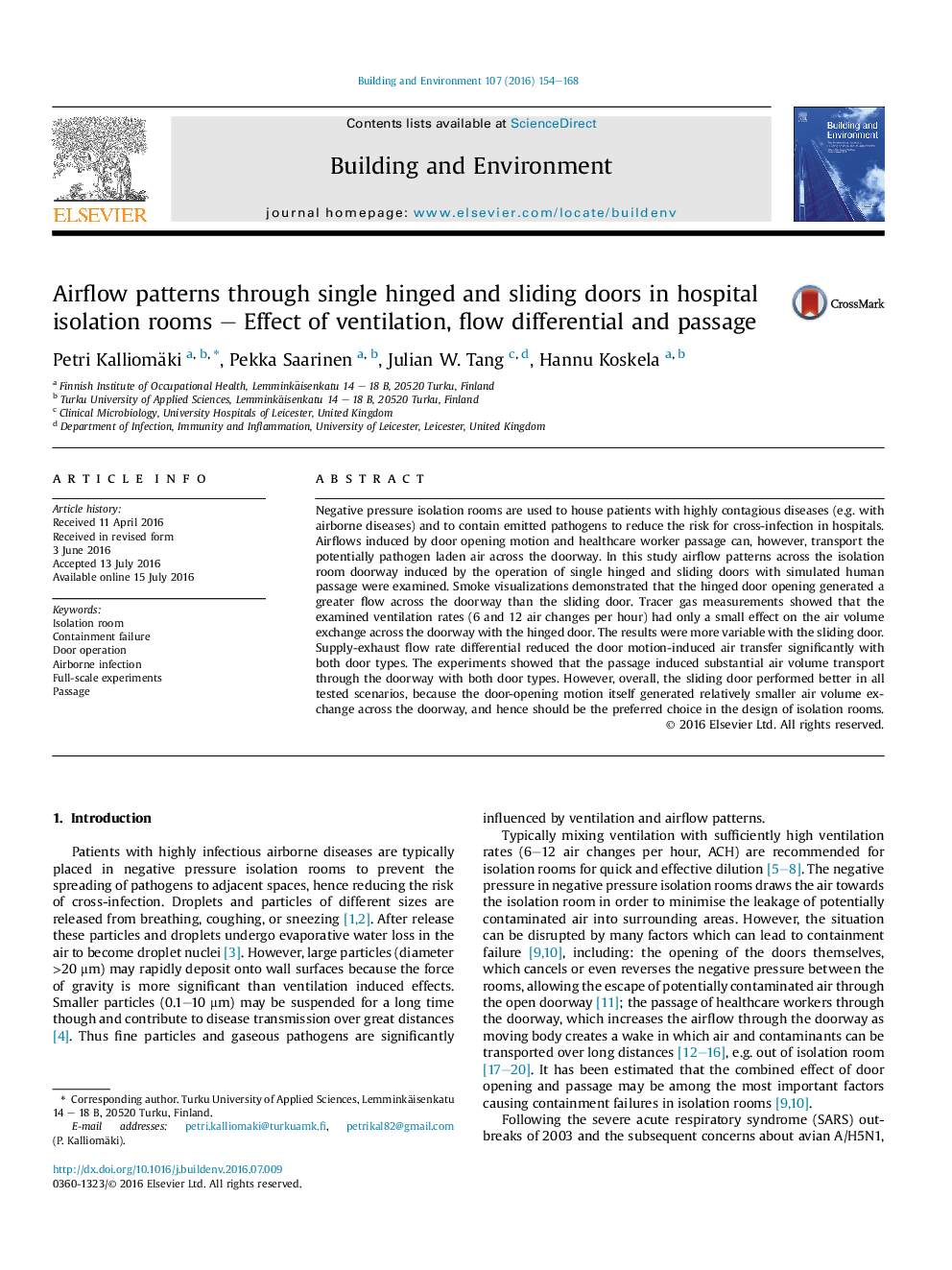| کد مقاله | کد نشریه | سال انتشار | مقاله انگلیسی | نسخه تمام متن |
|---|---|---|---|---|
| 247716 | 502516 | 2016 | 15 صفحه PDF | دانلود رایگان |

• Air exchange across doorway was compared with hinged and sliding doors.
• The sliding door motion induced less air exchange than the hinged door.
• Ventilation flow rate differential decreased the air exchange during door operation.
• Passage across the doorway increased notably the airflow out of the isolation room.
Negative pressure isolation rooms are used to house patients with highly contagious diseases (e.g. with airborne diseases) and to contain emitted pathogens to reduce the risk for cross-infection in hospitals. Airflows induced by door opening motion and healthcare worker passage can, however, transport the potentially pathogen laden air across the doorway. In this study airflow patterns across the isolation room doorway induced by the operation of single hinged and sliding doors with simulated human passage were examined. Smoke visualizations demonstrated that the hinged door opening generated a greater flow across the doorway than the sliding door. Tracer gas measurements showed that the examined ventilation rates (6 and 12 air changes per hour) had only a small effect on the air volume exchange across the doorway with the hinged door. The results were more variable with the sliding door. Supply-exhaust flow rate differential reduced the door motion-induced air transfer significantly with both door types. The experiments showed that the passage induced substantial air volume transport through the doorway with both door types. However, overall, the sliding door performed better in all tested scenarios, because the door-opening motion itself generated relatively smaller air volume exchange across the doorway, and hence should be the preferred choice in the design of isolation rooms.
Journal: Building and Environment - Volume 107, October 2016, Pages 154–168